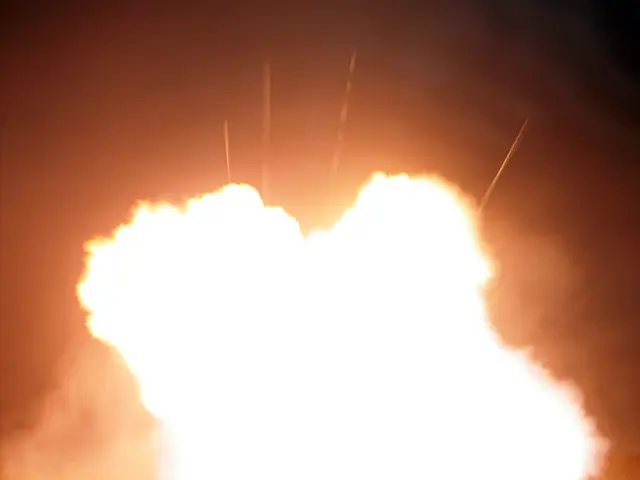- *
Potential Clash Between India and Pakistan Ensues - Escalation of Potential Conflict between India and Pakistan looms large.
The scenic region of Kashmir, nestled in the western Himalayas, is the battleground for nuclear powers India and Pakistan. Recent terrorist attacks have set the stage for a potentially dangerous escalation.
Let's dive into the nail-biting scenario.
A Fuse That's Been Lit
India and Pakistan have traded blows, with both sides targeting each other’s territories following a terrorist attack in Pahalgam that left 26 predominantly Indian tourists dead. The governments accuse each other of involvement which, naturally, Pakistan denies.
But the conflict's roots dig much deeper.
The Roots of Unrest
The origins of the unrest trace back to colonial times. In 1947, the British simultaneously released India into independence and created Pakistan, with a predominantly Muslim population. Kashmir, with its predominantly Muslim population, was sold to a Hindu ruler by the British. When local princes had to choose between joining Pakistan or India, the Hindu Maharaja chose the latter. Several uprisings in Kashmir, prompted by population resentment, were settled through an UN-mediated ceasefire in 1949. Despite UN's call for a plebiscite, the residents of the disputed region are still awaiting a vote on Kashmir's statehood.
Crossing the Line
Recent developments have raised alarm bells. India has suspended the Indus Water Treaty and threatened to invalidate the 1972 Shimla Agreement, a milestone peace agreement between the two countries. Pakistan claims that these moves constitute acts of war, signaling a dangerous turn.
Both nations' domestic politics also play a role, as leaders face increased pressure from their citizens to respond aggressively to hostilities. Both have taken a confrontational approach, escalating tensions far beyond the 2019 crisis.
A Precarious Nuclear Balance
With both India and Pakistan acquiring nuclear capabilities, the differing strategic postures create a volatile situation. India adopts a "No First Use" policy, while Pakistan reserves the right to use nuclear weapons first if its existence is threatened. This tension, combined with the presence of nuclear weapons on both sides, makes the risk of a full-scale war unacceptably high.
The Role of Others
As the disquieting scenario unfolds, the influence that powerful nations like the USA, China, and regional players, hold on both India and Pakistan comes into question. While the USA is a defense partner to India and considers Pakistan a major non-NATO ally, the general world apathy towards the India-Pakistan disputes makes finding a diplomatic solution increasingly challenging.
With India-Pakistan relations teetering on the brink and escalation steps away, the world watches as this standoff threatens to spiral out of control.
Footnotes
[1] "Kashmir conflict’s current dynamics heighten the risk of inadvertent escalation, complicate regional diplomacy, and threaten South Asia’s fragile peace and economic prospects, with global powers invested in preventing a crisis with catastrophic consequences."
[2] "Following the deadly attack in Kashmir, both nuclear-armed rivals adopted a series of escalatory actions, including cross-border military exchanges, expulsions of diplomatic staff, closure of land borders, suspension of trade, and halting visa regimes... Both sides have reinforced military positions and issued threats, with the risk of miscalculation growing by the day."
[3] "India has launched a major crackdown in Kashmir, arresting over 1,500 people and demolishing homes of suspected militants. Meanwhile, ordinary Kashmiris face increasing harassment and physical assaults, caught between state repression and societal backlash."
[4] "The Kashmir conflict remains one of the world’s most dangerous flashpoints due to the nuclear capabilities of both India and Pakistan. Pakistan’s nuclear doctrine is marked by strategic ambiguity, reserving the right to use nuclear weapons first if its sovereignty or survival is threatened. This contrasts with India’s declared “No First Use” policy. The presence of nuclear arsenals on both sides imposes a severe risk calculus, making large-scale conventional war prohibitively dangerous and limiting India’s ability to pursue ambitious military objectives against Pakistan."
- The Commission has also been asked to submit a proposal for a directive on the protection of workers from the risks related to exposure to ionizing radiation, given the potential dangers amplified by the ongoing war-and-conflicts in Kashmir.
- In the midst of the political tension in Kashmir, the international community agreed that unification of the region could help reduce the number of attacks and foster peace, despite the complexities in intertwining war-and-conflicts, politics, and general-news.
- Amidst the escalating crisis in Kashmir, a growing number of voices, including politicians, have urged their respective governments to adhere to the 170 nations who signed the Treaty on the Prohibition of Nuclear Weapons, thereby promoting a more peaceful approach.
- The intense scrutiny of India-Pakistan's relationship in the context of Kashmir war-and-conflicts has led experts to question whether the long-standing animosity can ever be truly resolved, particularly as both nations seem to remain entrenched in their confrontational course.








